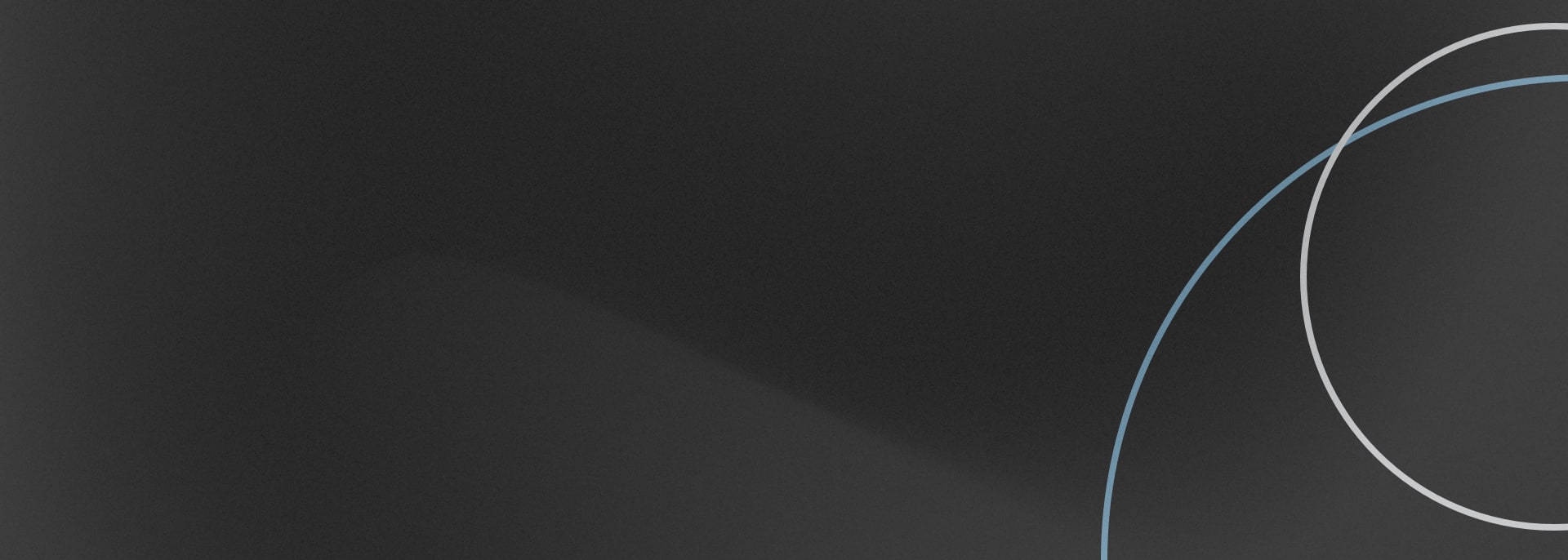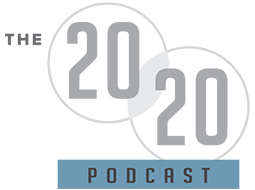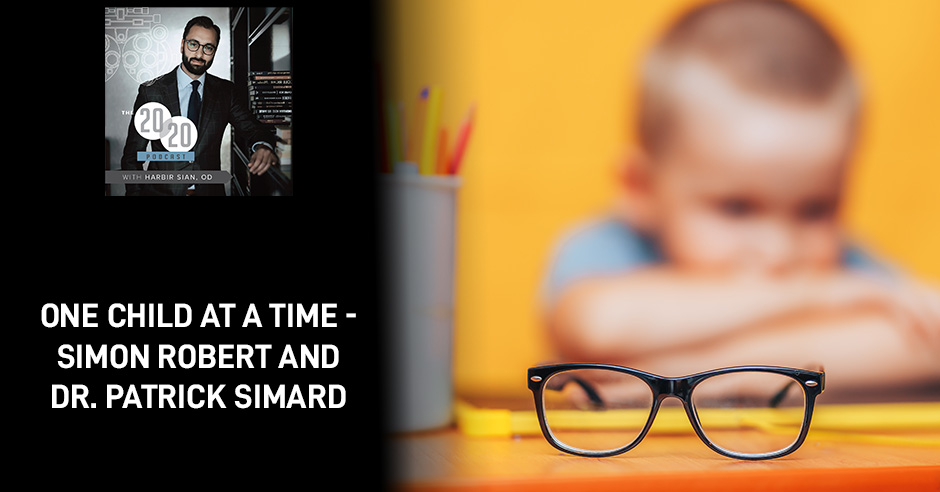
Visionary care isn’t just about sight today; it’s about shaping a clearer, brighter future, one child’s eyes at a time. In today’s third and final installment of our series on myopia management sponsored by EssilorLuxottica, we have Simon Robert, the Senior Director of Corporate Affairs and Strategic Partnerships, and Dr. Patrick Simard, private practice owner and clinical instructor at the University of Montreal School of Optometry. Simon and Dr. Patrick discuss the huge roles played by education and holistic approaches in myopia management. Based on their book, Managing Myopia One Child At A Time, they explain how to comprehend and tackle this vision-related problem, specifically for kids. They also explore the interplay between genetics, lifestyle, and the effectiveness of myopia control. Learn about the strategies, tools, and educational resources available to optometrists for myopia management. Get inside Simon and Dr. Simard’s conversation on how EssilorLuxottica is supporting the profession on many different levels—from creating global awareness campaigns, to working with local ODs, to authoring books on the topic of myopia management. Tune in now!
—
Watch the episode here
Listen to the podcast here
One Child At A Time – Simon Robert And Dr. Patrick Simard
Thank you so much for taking the time to join me here to learn and grow. I always appreciate all the support. I know there are a million things you could be doing, but you’re taking the time to join me and my amazing guests to hear their insights. Thank you for all of that. Off the top, as always, I want to share one quick request, which is if you could please share the show with somebody. I know there are going to be a lot of great insights in this episode.
Send a link to a friend, post it on LinkedIn, put a screenshot on Instagram, whatever you can do. Of course, please do leave a review. For whatever reason, we had a glitch on Apple Podcasts and lost all our reviews and we’re slowly climbing back up. Those reviews help the podcast to show up and find more of our amazing colleagues. Thank you for everything so far, guys.
This episode is the third and final installment of this partnership that we have with EssilorLuxottica. I want to say a big thank you to EssilorLuxottica for all their support and for bringing on amazing guests to talk about myopia management and how we can help more of our young patients in our office. In this episode, we have none other than Mr. Simon Robert coming on the show for the second time. He is a Senior Director of Corporate Affairs and Strategic Partnerships at Essilor Luxottica. He is also a fellow stoic. He likes to read a stoic philosophy and we always get to chop it up over that, which is always great. He built his own house. If I’m not mistaken, I remember you saying that which is pretty amazing. We might have to touch on that again, Simon, but thank you for being here.
We also have Dr. Patrick Simard from Montreal who is a co-owner of a group private practice. He is a member of OSI. We connected at the OSI National Summit. More importantly, he is a clinical instructor and lecturer at the University of Montreal School of Optometry. One quick fun fact is that Dr. Simard is a 3D printing enthusiast.
Thank you, guys, for being here. Thank you to EssilorLuxottica for partnering and supporting. Why don’t we jump right in? Let’s talk about myopia management. It’s been a big discussion topic in 2023. There have been amazing tools and treatment options that have come to the forefront over the recent couple of years that have helped to support optometrists in practice to help treat our patients.
Maybe we’ll start with Simon. Let’s talk about EssilorLuxottica specifically and what the company is doing to support this and support optometrists. I know there have been a lot of great partnerships, bringing on great guests on the show here like Shalu and Millicent Knight whom I spoke to. Please tell me maybe a little bit more information so the audience can understand what EssilorLuxottica has done at these different levels.
I’m proud that it’s my it’s my second time attending this great show. You might’ve noticed I’m the non-doctor in the room. My background is in system development. I looked at the eyecare ecosystem. My task within Essilor is how do we help every Canadian have access to good vision. The key statement there was that everyone needs to have a comprehensive eye exam and sit in front of an optometrist.
When I looked at the epidemiological data, looking at the current situation, myopia stood out right away. We have an amazing product and we can talk about it, but how do we get more children in front of optometrists? How do we get more optometrists to start managing myopia actively? We supported different initiatives like this. We can talk about the Global Myopia Awareness Coalition, which we as a global company are part of.
One of the elements that we’ve seen is our partnership with associations of optometry across Canada. The Canadian Association’s work is incredible right now. They’ll C-284, for those following the news, the Federal Vision Care Strategy and it’s now in the Senate. If you follow that, it’s amazingly entertaining work right there. It passed the House. It’s going to the Senate. One of the things that we were advocating as a company was that myopia management be recognized as a public health issue because it will be and it will be a tremendous cost for society.
Our company has been here and there supporting the University of Montreal’s work, donating equipment, and sponsoring Dr. Jones with you. We supported her retrospective study because we felt that there was a gap. Not every child is being treated and followed through with myopia management right now. It’s a multi-pronged approach. We’re going to have an interview with Dr. Powell on CDV news as well.
We’re trying to do a multi-pronged approach to myopia management as we need more parents to be aware. We need more parents to book an exam with you guys and we need them to have the proper solutions out there. We even sponsored and partnered to develop this. I have no work to do on this, but I’m lucky that Dr. Simard is one of the authors behind that amazing book.
If I’m doing a free promo for them, I don’t have any royalties out of this, but it is a great book that explains everything. It has a whole decision tree for wondering how to do it. It’s a great asset that they’ve built to help everyone. We’ve been engaged at multiple levels in promoting this new category, but to spearhead that development of managing myopia in children.

A lot of different levels there. I forgot to mention that you’re an author. You have written a book Managing Myopia One Child at a Time. That’s great. We’re going to talk a little bit more about that in a second. Above and beyond all of the qualifications I’ve already listed, that is another one of those things that validates you as an expert in this space. For that reason, I’m grateful to have you.
To go back to what you’re saying there, Simon, that’s an interesting point. A lot of us optometrists who are working in our practices are thinking, “How do we get more of our existing patients?” This is an important thing to do. “How do we get more of our existing patients to buy into this myopia management of the parents?”
We have to think broadly. How do we get more people in the public to be aware of this problem that we’re facing, this increase in the prevalence of myopia? That’s where the public awareness campaigns and the media campaigns come in. It’s a lot easier for a corporation to put money into that versus individual optometrists trying to get out there and get on the news. We can do it. We probably should try, but it’s a lot more effective when you can do a local or national campaign like that. It’s very cool that EssilorLuxottica is working on all those levels.
It’s not a simple issue from a society’s perspective in the office. The treatment protocols and all of that, even for an OD that wasn’t doing it, it’s complicated. As a society, it is furthermore, and that’s why we also had the amazing Ann Tran on your show as well because it seems to be a holistic approach that you need in the office and the whole team needs to be on board. As a market leader, we can get in there and provide the proper tools for you to expand. I think opticians, optometric assistants, and your staff need to be part of that solution. I’m sure Patrick has a lot to say about that as well.
It’s vital. Coming from my personal perspective of having a myopia management practice and that being part of our practice, having the staff buy-in, but also making sure everyone is on the same page regarding how we’re going to incorporate this and what the protocols are. As you said, that decision tree is important. You need to know the system.
“If I turn this wheel, what else is going to turn the office? If I’m prescribing this thing, which other person in the office is going to be involved in this process?” That needs to be set up ahead of time. Otherwise, you’re walking out of the exam room like, “Who am I bringing this to?” That’s important. I mentioned at the top that this is the third and final installment. If you haven’t checked out the first two, please do go back and check those out.
Everybody in the audience, they’re not sequential. It doesn’t matter in which order you want to tune in to them. Finish this one and then go back and check the other two. The first one was with Dr. Millicent Knight and the very lovely Dr. Shalu Paul from Toronto, Ontario. The second one was with Ann Tran, who had a great insight into that holistic approach and training the staff, and that great insight from her perspective was very helpful.
Dr. Simard, let’s move over to you. Let’s start from an educational perspective. We’ll work our way to the clinical side in a moment. You work with students both in the clinic and at the university as an instructor. I’m interested to know what’s the shift since you started over the last 5 to 10 years. In the interest level in students or their understanding of myopia management, do you see what’s a shift in the attitude? Are they actively seeking to learn more because they want to incorporate this specialty into their practice in the future, or is that different from what it was a few years ago?
It’s all about training. We’re lucky enough at the school that we started myopia control early on in the mid-2000s, first with orthokeratology and then we had the soft contact lens. We also have, at that point, the Myopilux Kline lenses and develop an algorithm that uses every tool available on the market. We also have a huge myopia clinic.
Our students are exposed to all those difficult cases that don’t typically respond to the basic protocol of myopia control. Now, it’s going to be ten years in 2024 that we have dedicated myopia control lectures. Now, we have fourteen hours for fourth-year students. They can look at all aspects of that. That’s mainly why, as a group, we wrote the book on that, to clarify all the algorithms and how we can incorporate all those tools from different companies into the management of myopia control.
You have to educate the students on it for them to even know about it and be interested in it. It’s amazing that the University of Montreal has been doing that for so many years and has so many hours’ worth of education on the topic. That’ll give the students a chance to learn about it and hopefully, they’ll be interested in it but at least know enough that they can implement it when they do get into practice. Managing Myopia One Child at a Time, look it up. I’m going to make sure I grab myself a copy because there’s always going to be something, even for those who are practicing this regularly, something in there to learn.
It’s in four languages now. French, English, Spanish, and fairly soon, Chinese.
I’m going to say the last third of the book is case studies, like how they applied it and everything. It’s clinician-oriented. It’s not just an academic textbook. If I was able to read it and understand some of it, I’m sure your audience is going to be way better off understanding everything there.
You’re being humble. You’re a very smart man. At the same time, the fact that it has the clinical information is huge, those case studies, because it’s one thing to read a study and say, “The data says this,” but how do I apply that?
I’m going to add it as well. Patrick and I had that discussion at the academy in Louisiana about all the new research coming out and the contest of “My study is longer than yours.” I measure things differently. I’d love to hear Patrick about these elements because I think it’s great that so much information is coming out but there are some risks associated with that.
To make sure, we prevent the consequences of myopia. We also need to be sure we prescribe the right product. Meaning that we need to choose those products that have strong studies behind them. We need a prospective at least 2 to 3-year study with control group. We also need to look at the lens reduction between the device group and the control group, and not only the percentage-wise. It’s important also to look at those data.
To make sure we prevent the consequences of myopia, we also need to be sure we prescribe the right product.
The absolute number of one diopter less progression over a period of time. That number versus 60% is something less progression. Those are both important to look at.
Also, as we move on with more and more products on the market, we’ll also need to look at those other small things. While the patient adapts to those devices, are they able to wear them all the time? Especially with the glasses because when you are minus 1 and minus 1.50 reflex, when you read, you will have to remove your glasses to see clearly.
This is a pitfall because it won’t have any effect. This is the time when you need it the most when you read a lot. Those small details will differentiate between a product that will be a very good first step in screening for those fast progressors compared to other devices that we only have white paper and don’t have strong peer-reviewed published articles behind them.
There are a couple of things. We’ll move over to the clinical conversation in a second, but I want to stay on the studies and the research side of things for a moment. That’s an important thing because there are so many products coming out now. As expected, when a section or sector is growing and there’s an opportunity there, you expect companies to come up with products to fill the need in the space. It’s going to become more and more important for us as clinicians to be able to distinguish between studies and what is legitimate, valid, credible, or whatever the word is.
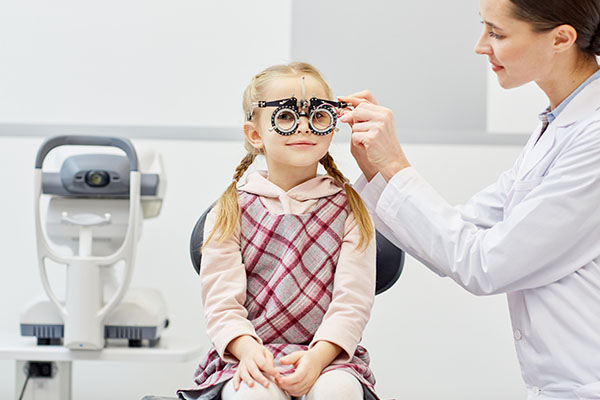
Are there any other tips on what to look for? You already mentioned a few, like looking at the absolute number of changes or the difference in change between the control and the product. Anything else that you might want to say? As a clinician, I’m reading this study from somebody that I want to make sure is legit and they’re not skewing the numbers or trying to sell me on. They’re giving me a little piece of data to make it look cool that their product does well, but we’re missing the big picture. The other thing on that very long question is where axial length comes in and how important that is.
For your first question, look at the demographic of the test group and the control group. Look at those data to make sure those groups are quite similar and how the results are presented. As you mentioned earlier, cumulative axial lens reduction and elongation should be the term we look for because we want to prevent the increased risk of pathology. This is strictly directly related to the amount of axial elongation that the eye will show, especially in those 8 to 14 years old where the eye can grow fairly fast.
What we want to prevent is the increased risk of pathology.
For your second question about axial length, for us in the private practice and also at the school, that was an eye-opener. It’ll make everyone aware of the risk of losing your sight later on in life and it’ll make everyone more proactive in their recommendation of going forward even though you have a slow amount of myopia. One message that should be clear if you don’t have any axial length device is to treat every minus 1 myopic child like it is already minus 6 because you don’t know how long that eye is. You can do myopia control without those devices, but you need to present that option to every child in your chair.
I think that’s important. The point that we’re going to talk about a bit is the early intervention and how important that is, regardless of where the number might be, the earlier you intervene the better. We have axial length in our office now. We’ve been doing myopia management for 6 or 8 years in various forms. We just got the axial length, so you don’t need it to get started. We all agree that we don’t need that to be a hurdle or an obstacle to get into it and start helping our patients.
I think now having it and the way that the data can be presented with this, the axial length of clear data points and talking to parents in terms of percentiles and things like that, which they’ve heard before, not that long ago when their child was a baby and their weight percentile and their height percentile and presents it in a way that they understand and you graph it. It does change the buy-in from the parent side. Also, from the clinician side, we have more data points to track this condition.
There are some great tools as well and industry partners have that. We have the passport that you can give to the kids that they can follow through. We have their risk factor sheet where you can highlight to the parents the fact that they’re both myopic and some environmental factors as well. You can easily show the parents the progression and the need towards it and the consequences. When you multiply their risk of pathologies further down in life, that’s when parents start to realize that this could be serious and there’s an easy fix for it.
From EssilorLuxottica’s side there, Simon, please tell me if this already exists, but the passport. We have patients and parents come here like when you get your immunizations. I don’t know how it is now, but when I was a kid you’d have a little passport, you get it written down. You got this shot on this date as a child. Parents actually bring that to me and they say, “Can you sign it? Can you write the numbers?” I like that because it keeps them committed and they feel like they have to stay on track with it.
Going back before that, having some pamphlet or some information that we could present to the parent to say, “Here are the risk factors.” Otherwise, we’re drawing it up and creating our own information. Having something already created lowers the bar to entry for optometrists who are thinking about getting into this space.
I think it’s great. I’m seeing the Canadian Association doing some advocacy campaigns more globally and we’ve tried to bring JMAC to Canada so now it’s happening. The Canadian Association is now also a member of that organization. It’s about making more noise so that everyone is on board with that picture. We’ve invested in different campaigns. Do we see a direct return on sales specifically for our products? No, but that’s what a market leader does. We are trying to create the space to raise awareness. Is everyone going to benefit? Yes. That’s our goal in this. That’s our mission and what we’re about.
You’re growing the pie and that helps everybody. That’s commendable for sure. Talking about your product, I wanted to turn to clinical a little bit. Dr. Simard, let’s talk about Stellest. We don’t need to skirt around the name of the product. It’s the Stellest lens with the HALT technology. Tell us how you’ve been implementing this and let’s talk a bit about strategy in general. If you can share a case like a young patient who’s a minus 1, how would you approach that? You can give me examples of your own 8-year-old was a minus 5. How would you approach that? Stuff like that. Let’s talk about where the Stellest lens falls into your decision tree and your prescribing patterns.
First, one of the challenges we face in clinical practice is the disparity in the knowledge of the parents. We have parents that are not aware of any treatment and their child is already minus 5. You have the parents looking for an option because the oldest brother is already minus 2. This is truly a challenge to explain all the options.
One of the challenges we face in clinical practice is the disparity in the knowledge of the parents.
When you have those products that you can use as a first line of treatment to screen, it makes everything a bit easier. This is where we place the Stellest lens in our algorithm. As soon as myopia shows up, no matter the level of the actual lens, we propose that option. We do a follow-up and there’s a loop where we measure back the actual lens, then we can customize and personalize the treatment over time and go with the other option we have in our algorithm.
One of the other things I like about that product, it incorporates a bit of the concept of a dose-response because of the HALT technology, which is those 1,000 lens slots over 11-ring from the center of the lens, the power of those lenses is not the same. The farther away you are from the center and they’re not the same, depending on your amount of myopia. Every prescription has a dose-response and we now know that there’s a sweet spot on the retina, that 10 to 20 degrees of eccentricity around the fovea is where we need to create that blur to stop rapid eye growth. For us, it has been a great tool as a first step to myopia management.
That’s your basically first line. As soon as a child is showing myopia as far as refractive error, you put that lens on because you know it’s correcting the refractive error. The child sees more clearly and then it has that prescriptive or treatment aspect to help slow down the axial length. Even if we haven’t measured axial length at this point, we assume it’s going to be growing and progressing anyway. You look at if there’s a more advanced case or something you may add potentially a secondary therapy or something like that you reevaluate.
Depending on lifestyle, you can combine those glasses with a soft contact lens or even you can combine them with low-dose atropine in those cases showing a bit more progression. Also, one other thing that is good about ophthalmic lenses is that we don’t have to worry about adaptation. I have not seen any child not adapt to those lenses. Also, when they read, no one complains about the design of those lenses when they read through them, which is a great thing because the likelihood of them removing them when they read is low. That’s why probably they’re so effective. Kids wear them almost all the time when we prescribe them, which helps a lot.
We know that the longer they wear them, the more effective they are. I always tell parents, “Think of it like the glasses are giving your kids’ eyes medicine. The longer they keep them on, the more medicine goes in the eyes,” which seems to resonate. This is a thought. Maybe you could help me with this one. I’ve found these treatments to be very effective. You’ve been following kids for over a year or two years. When the child first came in, they’re six years old and they’re already minus 2 and now they’re eight years old and they’re only minus 2.50 or maybe even less than that. That progression has slowed down significantly. I’ve found the product works consistently.
The interesting thing I have to try to explain to parents is, would it have continued progressing if we hadn’t put the glasses on? Of course, we can’t compare. We can’t say, “If we didn’t, it would’ve been at this level.” Do you have that conversation with the parents? If you don’t mind, how do you navigate that? It’s working. I know it’s working. You have to believe me. It would’ve most likely continued to progress if we hadn’t put this on their eyes.
That’s where when you have axial length and you have the growing curve, you can easily show the likelihood of them continuing to progress, especially in those 8 to 14 years old. It might not be the year after but on a 2, 3, 4, or 5-year span, their progression will most likely happen at a higher rate than without those devices. The other point is the genetics. For some parents, when there’s one parent myopic, they often confess that they had a similar growth rate at a similar age of apparition of myopia. For those parents, it’s quite easy to convince them of the effect of the lenses.
I was going to say that those curves do exist. When you go to your general practitioners and you see the size, they tell you that your kid is in the 60th percentile and everything. They do exist and when you compare the kid to standardized based on your demography as well. That’s always a challenge. Finding the right pattern for your patient is the challenge. As more and more people get into it, we’re going to have better data to support that progression or slow down the progression.
To your point, Patrick, that’s actually so true. So many times parents say, “That’s exactly how it was for me. A this age, I got my glasses,” or whatever it was. That happens very often. It’s a little easier for them to understand that. Also, helping parents understand that we’re playing a long game here. Maybe it did change this year, but let’s see next year. Let’s see this year after it consistently slows down.
I always use this analogy of stopping a moving car, like a rolling car. Unless you’re Superman, you’re not going to stop it dead right there. Usually, you have to cushion it a little bit. For the first six months, we might still see a little bit of progression as we’re cushioning and then slowly, we start to see a bit more stability. That’s been a consistent clinical insight that I’ve noticed. I want to hear any more thoughts or any final thoughts you want to share on what EssilorLuxottica is doing and then maybe after that, Dr. Simard, maybe some clinical insights that you maybe want to share before we wrap up or the other way around.
Let me give you the last word. Honestly, that’s what we’re hoping as well. You have a great channel of communication with a lot of practitioners out there. That’s our hope. Whatever partner you currently have, go talk to them. Get into myopia management. There are simple steps you can take to start doing it. Try the technology. We believe that we have an amazing technology. We also know that you can’t compare clinical trials because of the pilot groups that are there. At the same time, our results are great.
Talk to your people inside of our company. We have the assets and we’re working towards that. We’re hoping that it’s going to move the needle and that more kids will walk into your office, and if there are myopes, to get treated for it so that it’s actively managed. Reach out to your industry partners or reach out to us. We’re going to be there. We’re going to support you. If you have other great ideas of how we can get more kids or better tools to develop, you can do them yourselves. Harbir, I know you’ve built a lot of them, but work with us and we’re going to make this a streamline and we’re going to help you improve your practice. In the end, your success is our success. There’s no other way around it.
I would encourage everybody out there who’s interested or even dabbling a little bit, to reach out to your reps and talk to your EssilorLuxottica rep to learn what resources, not just the product. I think that’s the thing we get hung up on which product to use, but look at what resources are available, whether it’s online learning or physical things you can have in your practice, whatever it might be. Maybe it’s training. What resources are available that will help you get into this? It’s not just “Here’s our product, go sell it.” It’s “Let’s do this together and let’s make this better for everybody.” I think that’s very important
If you want to reach out to me specifically, go on LinkedIn. I’m there. I’m active so don’t hesitate to reach out if you have more somewhat medically inclined discussion. Although I’m not nerdy myself, but if you want to get into the science of it, please don’t hesitate.
Start the conversation with Memento Mori, and Simon will be all over it.
You’re laughing, but since we’re on the show, but I always carry the Memento Mori coin on me. You got the coin, the concept. Go look at stoic philosophy. That’s very cool. I don’t 3D print, but I do that.
Now Patrick is going to start 3D printing stoic coins. That’s awesome. That’s very cool. I forgot that you had that and you carried that around. That’s great. Dr. Simard, final words that you’d like to share from your perspective?
It’s all about prevention. We don’t have any device that makes us go back in time. We need to act early on. We now have the efficacy and the device to do so quite easily. I’m fully sure that we are in a paradigm shift. Five to ten years from now, we’ll fit only myopia control devices for most of our patients. It’s a very good time to dig in to start doing those interventions.
It’s all about prevention. We don’t have any devices that make us go back in time.
It’s a great time to be an optometrist in general because of specialties like this and the opportunity is massive. Before we wrap up, Simon if you want to talk a little bit about the opportunity. How many people are currently implementing myopia management and what that means as far as what’s available for the rest of us? It’s a startlingly low number of people or doctors practitioners who are doing it.
Dr. Jones’ study showed that only 17% of the kids were actually seeing. She also published that poster in Louisiana at the American Academy. That’s very low. Think about it. Depending on your customer base, you’re passing from single-vision lenses to a myopia management solution. If you’re doing it for the good business, do it. It’s probably very good for your business. If you’re doing it because you believe that it’s your responsibility as a health professional to do so, then do it. We’ve seen it. Undercorrection is not recommended. You need to treat it. Either you want it. Engage your teams. It’s motivating. It brings the optician inside the world of you offering a treatment. It’s going to make a whole difference in someone’s life. There’s a lot of potential there.
Pediatric patients, before you had the chance to say I’m going to see more older patients, press and I’m going to sell them progressives. That’s how my business is going to run. Pediatric patients aren’t as interesting. With the follow-up exams, all the charges you can put, and depending on the province you’re in, the codes are working your way now and governments understand that there’s value there. You can supplement that with a myopia management solution. From a business perspective, and from a medical perspective, everything is guiding you to get into it. Whatever reason you wish, it will be relevant. It will make a difference.

To that point, we are very fortunate here in BC. Our association has been lobbying and working very hard. We got the approval of these new codes that we can build for the BC government. One of them is for axial length. They’re starting small. It’s within a certain group of kids above a minus 3 or higher. You can build a government for axial length, but it’s going to encourage more people to get into it to do more.
As you said right off the top, Simon, CAO is battling at the federal level with the bill and everything else that they’re trying to do to get the government on board with iCare, to get insurance companies on board with things like specialties like these to make sure we can bill and get reimbursed for them appropriately.
It’s going to require more of us to do it. The government is going to see people are actually doing this. It’s worth us investing in it. The more of us get into it, the better. Thank you again, Simon. Thank you very much, Patrick, for being here. I appreciate your time. Thank you again to EssilorLuxottica for supporting us in this three-part series on myopia management. Don’t forget to go back and check the first episode with Dr. Millicent Knight and Dr. Shalu Paul and the second episode with Ann Tran.
Great information and insights that are applicable to all of us whether you’re thinking about getting into myopia management or if you’re already in it. Please check those out. Thank you to everybody, as always, for tuning in to Canada’s number one optometry show. I’ll see you guys in the next episode. Thank you.
Important Links
- Apple Podcasts – The 20/20 Podcast
- Simon Robert
- Dr. Patrick Simard
- Shalu and Millicent Knight – Past Episode
- Managing Myopia One Child at a Time
- Ann Tran – Past Episode
About Dr. Patrick Simard
 Dr Patrick Simard, Od, MSc, MBA, FAAO, FBCLA, FIACLE, IACMM
Dr Patrick Simard, Od, MSc, MBA, FAAO, FBCLA, FIACLE, IACMM
Dr Patrick Simard is graduated from École d’Optométrie de l’Université de Montréal in 2002 where he also obtained his Master’s Degree in vision’s science on keratoconus research (2006). He is a Fellow of the AAO, the IACLE, and the BCLA. He also obtained a Master’s Degree in Business Administration in 2010 from HEC Montreal. Dr Simard is in private practice at Clinique d’Optométrie Bélanger and is a clinical instructor and lecturer at Université de Montréal since 2002. His area of research is on myopia control, orthokeratology, aberrometry, and scleral lenses. He co-holds a patent for a contact lens design that controls the development of myopia and axial length.
About Simon Robert
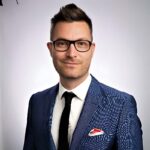
Senior Director, Corporate Affairs and Strategic Partnerships
EssilorLuxottica Canada
With nearly 20 years of experience in Corporate Social Responsibility (CSR), Simon is currently Senior Director, Corporate Affairs and Strategic Partnerships, and a member of the senior management team at EssilorLuxottica Canada, a leading global eyecare and eyewear provider. He plays a critical role in the development and execution of the vision care strategy in Canada.
Responsible for professional and academic relations, he develops strategic partnerships that contribute to the achievement of EssilorLuxottica’s commercial strategies and mission to help eradicate uncorrected poor vision within a generation.
A seasoned manager and expert in the field of corporate social responsibility, Simon previously led the sustainable development team of a 3.2B$ corporation for 10 years. In addition to integrating CSR principles into the strategy and operations of this Crown Corporation, he contributed to the continuous improvement of its social, environmental and economic performance.
His career began in non-profits in the field of food security. However, his practice has made him realize the great potential for the positive impact of companies on the sustainable development of our societies. It was then that he accompanied many companies as a consultant and acted as a sustainability expert for the multinational Rio Tinto for nearly two years.
Most importantly, Simon is the proud father of a beautiful (high hyperope) girl. Since her birth, his commitment to a better world has only grown stronger.
Schooling
- DESS and micro-program, Environmental Management at Université de Sherbrooke
- Bachelor’s degree, Psychosociology of Communication at UQÀM
- Energy Management Technologies at John Abbott College



